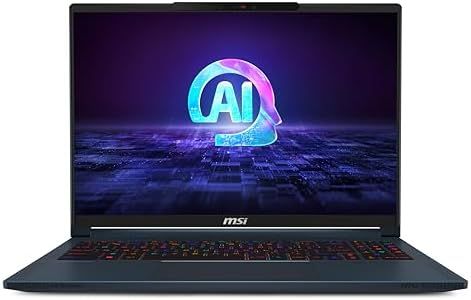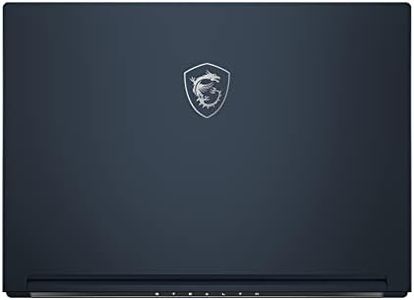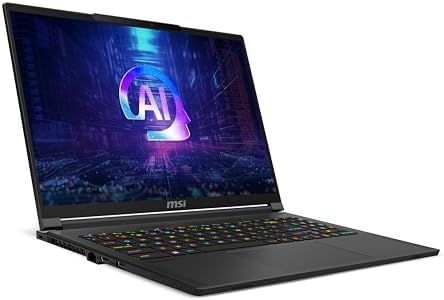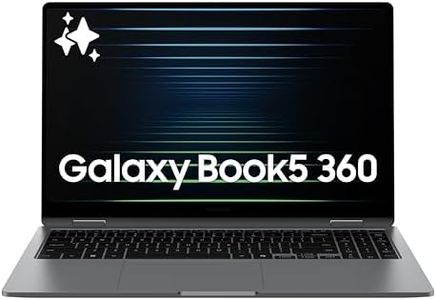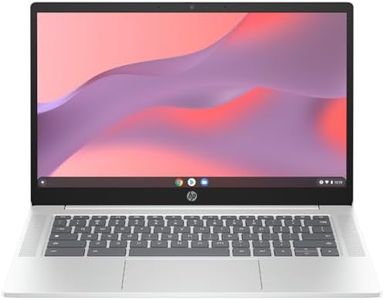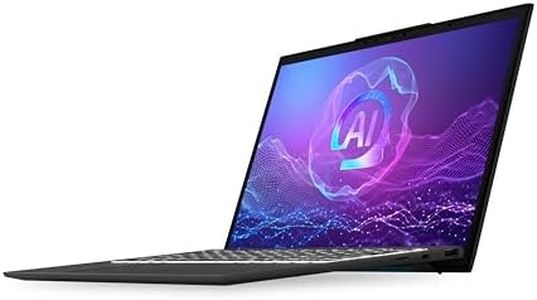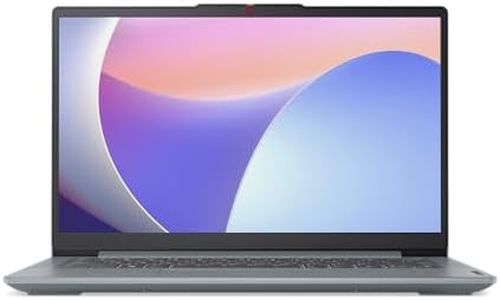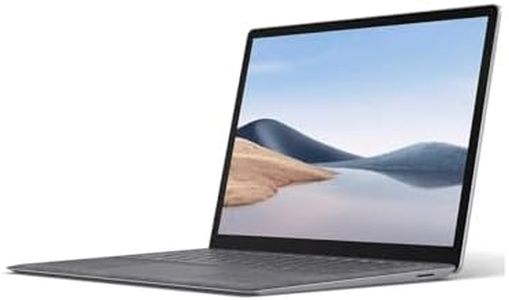We Use CookiesWe use cookies to enhance the security, performance,
functionality and for analytical and promotional activities. By continuing to browse this site you
are agreeing to our privacy policy
10 Best Laptops
From leading brands and best sellers available on the web.Buying Guide for the Best Laptops
When shopping for a laptop, it’s important to think about how you plan to use it. Are you looking for something portable for travel, a workhorse for school or office tasks, or a powerful machine for gaming or creative work? The right choice will depend on your daily needs: consider how much you’ll be moving it, what sorts of programs you’ll run, and whether you prioritize long battery life or top performance. By understanding the key features and matching them to your lifestyle, you’ll be able to pick a laptop that truly fits your needs, rather than one that just looks appealing on the shelf.Processor (CPU)The processor acts as the laptop’s brain, handling all the instructions the computer receives. A more powerful processor allows you to run heavier programs, multitask more efficiently, and experience fewer slowdowns. Basic processors work fine for web browsing, office applications, and streaming, while mid-tier processors are better for students or professionals who multitask or use moderate apps. If you’re into gaming, video editing, or advanced software, look for high-end processors. Think about the heaviest task you'll regularly do and make your choice based on that.
Memory (RAM)RAM is your laptop’s short-term memory, helping it quickly access needed information. More RAM means smoother multitasking and faster responsiveness, especially when running many apps or opening large files. Light users (web browsing, email) can be comfortable with lower RAM, while students or office workers benefit from moderate amounts for everyday use. If you do creative work, heavy multitasking, or gaming, opt for higher RAM. Consider how many tasks you juggle at once and pick a laptop that matches that demand.
Storage (SSD/HDD)Storage determines how much data you can keep on your laptop and influences speed. SSDs (solid-state drives) make laptops much faster when booting up and opening programs, while traditional hard drives (HDD) offer more space at a cheaper price but work more slowly. People who mainly store documents and browse online can manage with smaller SSDs, while those handling lots of photos, videos, or games will want larger storage, ideally SSD-based. Choose based on whether you value speed (SSD) or just need to store lots of files (larger HDD/SSD).
Display Size and QualityScreen size affects both portability and how enjoyable it is to watch or work. Smaller screens (11"–13") make the laptop lighter and easier to carry, ideal for frequent travelers or students. Medium screens (14"–15.6") balance portability and viewing space, suiting most general users. Larger screens (17" and above) are best for those who want a full workstation feel. Also, pay attention to screen resolution: higher resolutions look sharper and are better for creative tasks. Decide based on whether you prioritize portability or an immersive viewing experience.
Battery LifeBattery life tells you how long the laptop can run without being plugged in. Some laptops are designed to last a full day away from outlets, while others—especially more powerful machines—require recharging sooner. If you’ll often work on the go, look for models with longer battery ratings. If you usually work near power outlets, battery life may be less important. Think about your daily habits to figure out how many hours you’ll need.
Weight and PortabilityThe weight of your laptop impacts how comfortable it is to carry around. Ultra-light models suit those who travel a lot or commute daily, while heavier machines may offer more power but are best for desk-bound use. If you move your laptop frequently, pick a compact and light option. If it mostly stays put, you have more flexibility to choose larger or heavier devices.
Build Quality and KeyboardA well-built laptop will withstand daily use better, and a comfortable keyboard is key if you type a lot. Some people need rugged builds for travel or fieldwork, while others want slim, stylish laptops for the office or home. Likewise, those who type lengthy reports should test the keyboard feel. Match the build and keyboard comfort to your work environment and how much you type.
Ports and ConnectivityPorts allow you to connect devices such as USB drives, external monitors, or headphones. Laptops vary from offering just a couple of ports to a wide range. If you use multiple accessories or plan to connect to different displays, ensure the laptop has all the necessary ports. Think ahead about what devices you’ll connect regularly.
GraphicsGraphics determine how well your laptop handles visual tasks like gaming, video editing, or running multiple monitors. Standard laptops use integrated graphics, fine for everyday activities. Those who play games or work with demanding graphics software will need dedicated graphics cards. Choose based on your usage—if you mainly browse, stream, or work on documents, basic graphics are enough; otherwise, go for dedicated graphics for heavier visual needs.
